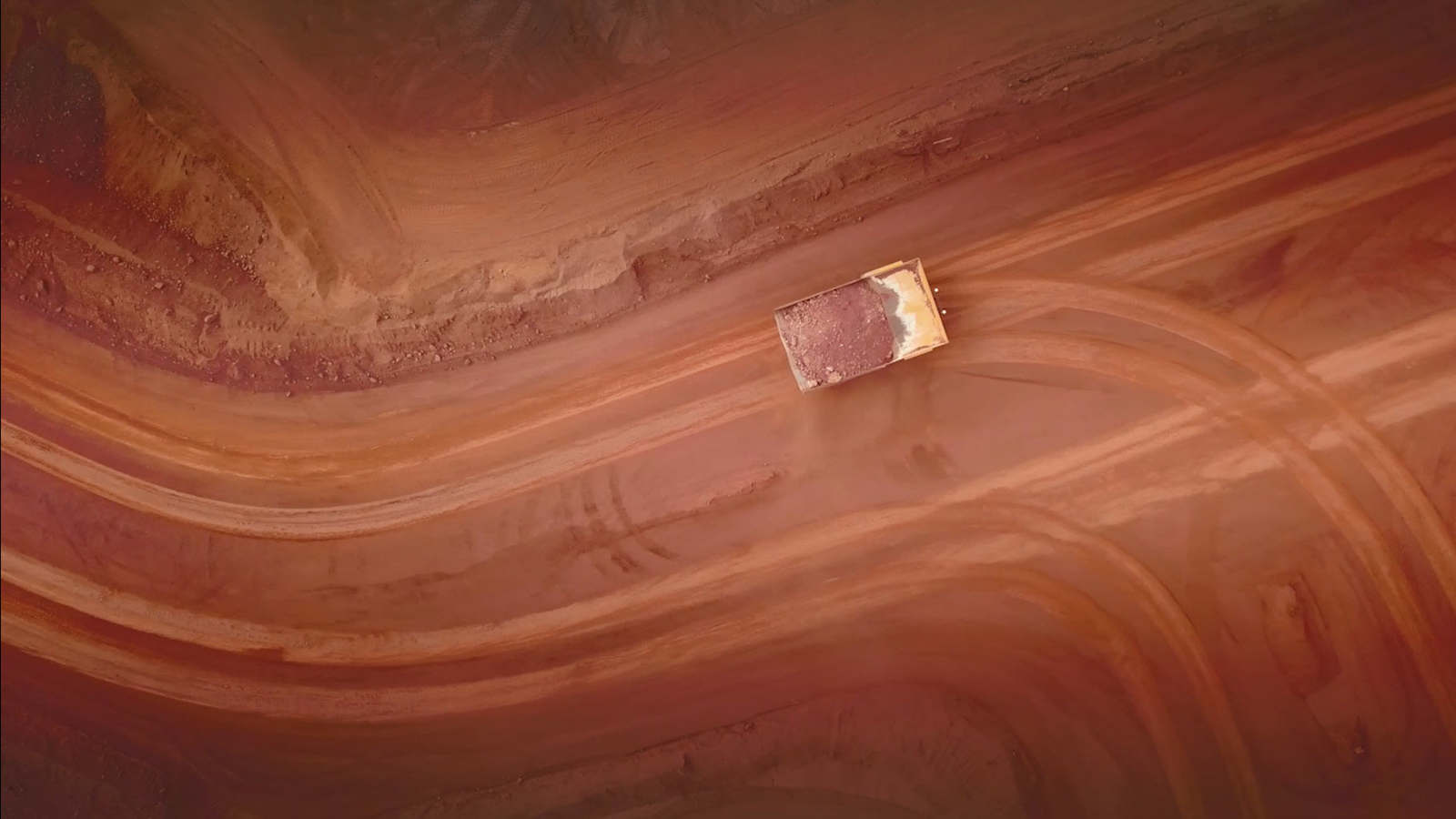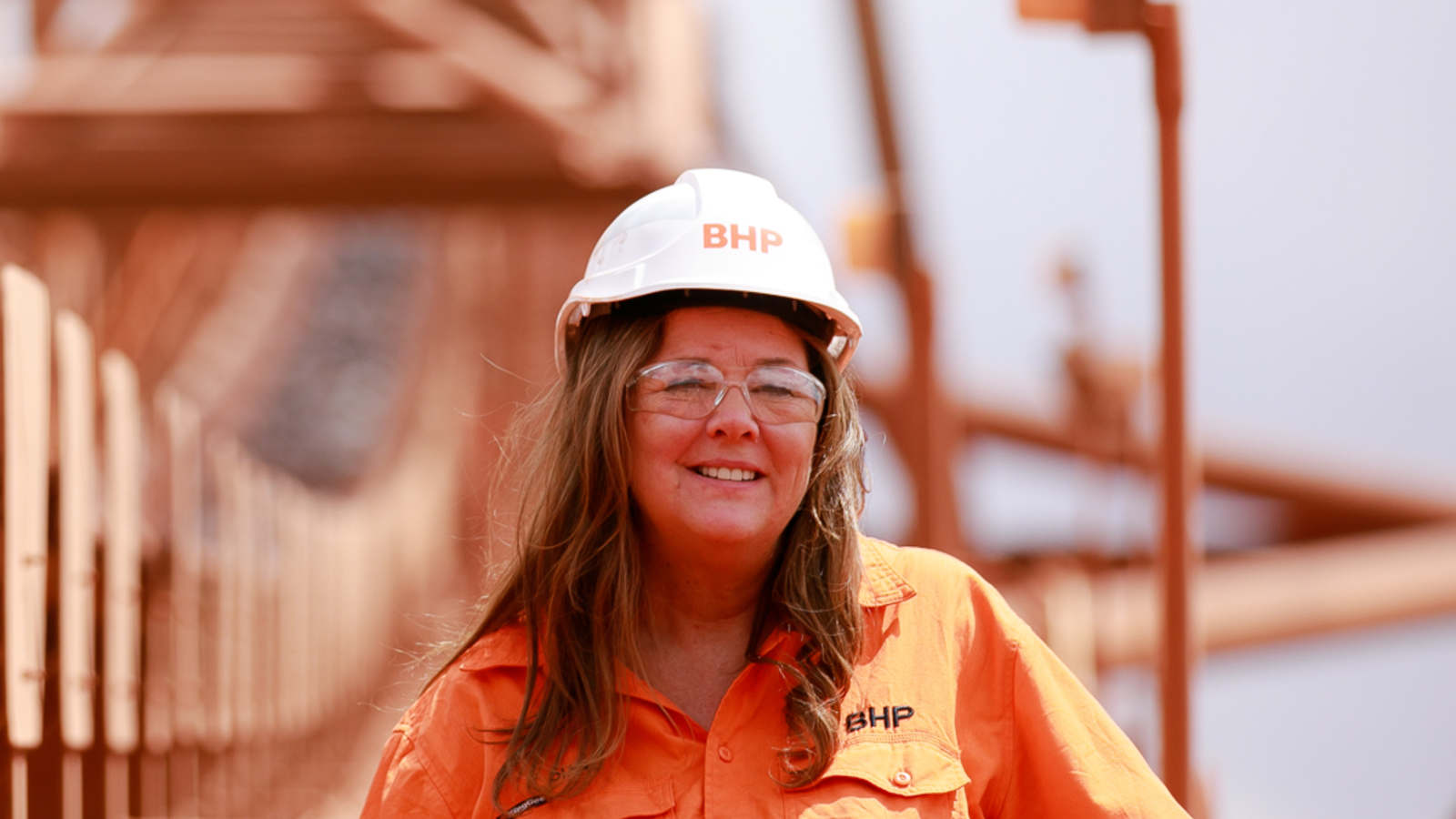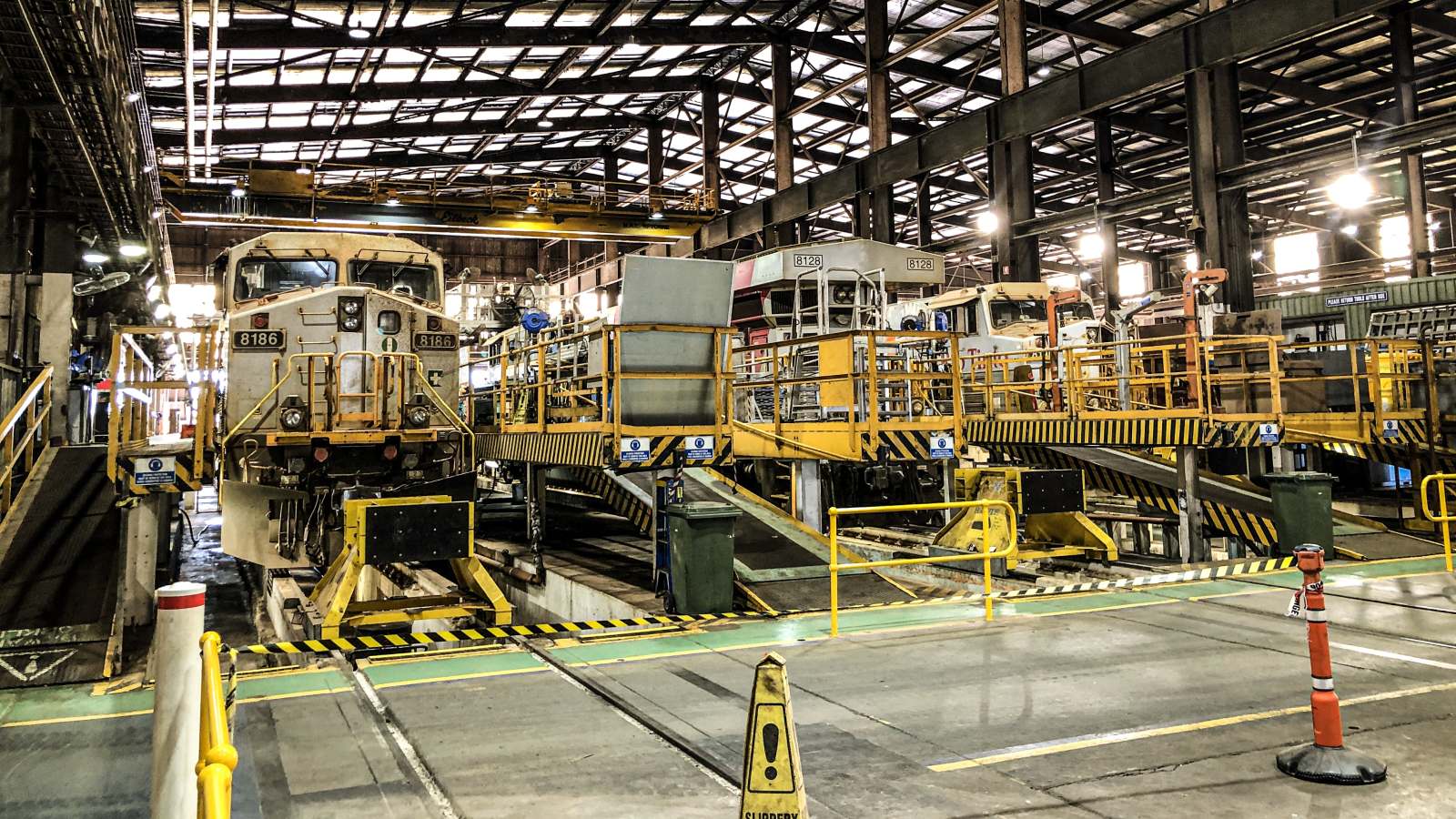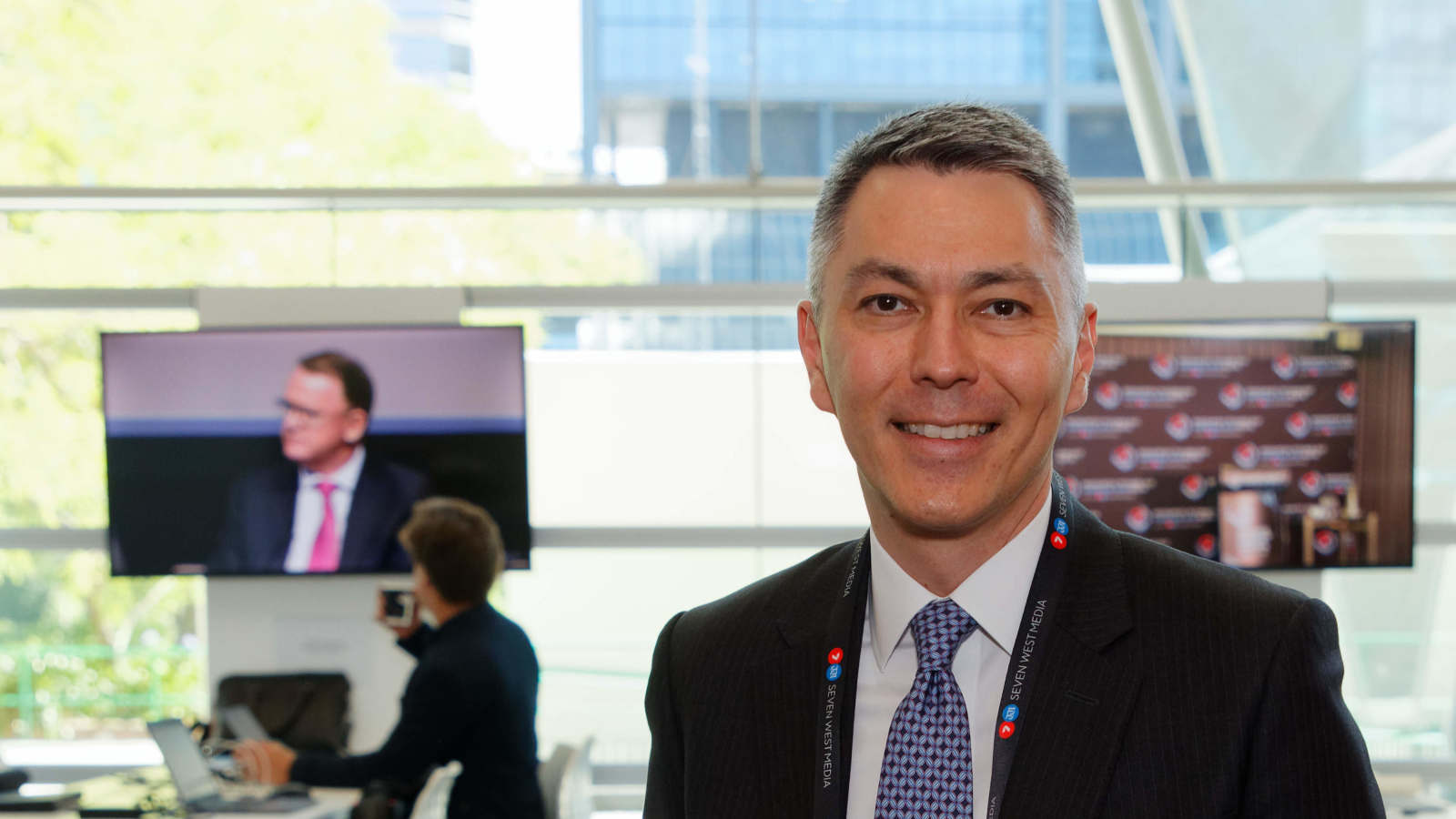Rise of the machines: Why Australia's miners are racing for automation
by Nick ToscanoThere’s a photo making its way around the top ranks of BHP at the moment. It’s an aerial picture from Jimblebar, one of the company's biggest mines in the Pilbara. It shows a truck following a set of tyre marks, straight as a train track, etched into the earth from the thousands of trips before it.
The reason staff at BHP are emailing this unremarkable photo to each other is that the truck is autonomous – meaning it is driverless – and the perfect tyre marks tell much about why these vehicles are being rolled out across the miner’s haulage fleet with speed and enthusiasm: they show exactly where they are going and exactly where they have been. As one BHP manager puts it, “This photo tells a story.”

If you don’t work in the resources industry, the benefits of such precision and predictability might not be obvious. But for the miners of the vast Pilbara in Western Australia – whose iron ore sells for $US85 a tonne but could soon be fetching a whole lot less – productivity is king and efficiency matters.
It’s been a massive year for the steelmaking commodity iron ore, the nation’s biggest export. It experienced a mini-boom to $US122 a tonne on the back of soaring demand from China’s steel mills and a global supply shortage. But the good times, many now believe, will not be here to stay.
From Donald Trump’s trade war with China to a slowdown in global economic growth, the outlook for steel demand is weakening. According to the federal government’s latest quarterly resources report, iron ore prices will plunge from an average of $US80 a tonne this year to $US57 by 2021. As for Australia’s top Pilbara miners – BHP, Rio Tinto and Fortescue – the race is now on to strip out costs, drive productivity gains and preserve prosperity through whatever lies ahead. And much of that will be achieved through technology.
“For mining companies,” Rio Tinto iron ore chief Chris Salisbury said this week, “the key focus is to control the controllables”.
'Wheels taller than the ceiling'
On a hot Tuesday morning at Jimblebar, the temperature is quickly approaching 40 degrees. BHP’s technology boss, Diane Jurgens, is giving a presentation in an air-conditioned room usually reserved for training sessions. The topic of her speech is the company’s technology push and the major changes it's been driving. Why she’s chosen to make the address here in Jimblebar is that this site – 400 kilometres inland from Port Hedland – has become something of a testing ground for the mining giant’s autonomous ambitions over the past few years.
Jimblebar is now close to fully autonomous, she explains – its fleet of blast-hole drills are automated, largely controlled by the company’s remote integrated operations centre based far away in Perth. Since their introduction, drilling costs at the mine are down 25 per cent and the cost of maintaining the drills has fallen 40 per cent.
More recently, as of November 2017, Jimblebar’s haulage fleet of 57 trucks has become fully autonomous, too.
“Wait until you see these trucks,” says Jurgens. “Huge. Wheels taller than this ceiling.”

Day or night, rain or shine – in fact, right this very second – there are 50 such trucks moving between Jimblebar’s pits and processing plants, many of them driving one behind the other, exactly 30.00 metres apart.
“What that’s done for us is increased our truck utilisation – the availability – so we can run them almost 24 hours a day,” Jurgens says. On good days the trucks will only have to stop for refuelling, which takes 15 minutes, before they are back at work again.
The productivity results are meaningful. Since the introduction of autonomous trucks, Jimbleblar’s haulage costs have been slashed by 20 per cent and the mine is now considered the “benchmark” site for haulage costs within BHP’s portfolio.
But for Jurgens and the management team at Jimblebar, the most important results are seen in the incidence of what’s known in the mining sector as “PL4s”. Significant events – events that could have seriously injured or potentially killed somebody. Despite Jimblebar’s expansion and almost doubling of the truck fleet size, PL4s are nearly 90 per cent lower.
Productivity push
The push to achieve productivity gains, of course, is nothing new in Australia’s fiercely competitive resources industry. Steady progress has been on foot for some time. Rio Tinto, the nation’s second-biggest miner, is widely considered to be the industry leader in the development and adoption of autonomous mining technologies. More than a decade ago now, Rio set itself a vision called “mine of the future”, which has included the adoption of autonomous drills and driverless trucks. Its highest-profile and latest milestone, however, has been the successful deployment of its AutoHaul technology – the world’s first automated, heavy-haul long-distance train network.
Rio Tinto refers to it as “the world’s largest robot”. And with a network of 200 locomotives and 1700 kilometres of railway track transporting ore from 16 mines to four port terminals, it’s a boast that is technically correct.
Since 2017, under Jurgens and the leadership of BHP’s outgoing chief executive Andrew Mackenzie, the company has been eager to shake its reputation as the “follower” in the field of technological innovation. By some measures, it might just be paying off.

BHP’s iron ore operations, its biggest cash generator, has increased production by 20 per cent while reducing costs by more than 50 per cent. And last year, it toppled its rivals to take the mantle as the world’s lowest-cost iron ore producer, with unit costs of $US11.89 per tonne for the six months to June and $US12.86 per tonne for the full year.
Salisbury, at Rio Tinto, says today's more subdued outlook for iron ore – caused by the predicted drop in Chinese imports and greater use of scrap metal in the country's steel mills – means Australian miners will adopt an even greater focus on insulating their businesses by investing in technology and productivity.
Just this week, the board of Rio Tinto signed off on a $1 billion investment to sustain production capacity and drive down costs at its oldest mine in the Pilbara, the Greater Tom Price operation. The funding will go towards the construction of a new crusher and a 13-kilometre conveyor and, crucially, it will also be used to turn half of its truck fleet at one of the mines into autonomous trucks by the end of the year.
Up to180 haulage trucks, about half its iron ore fleet, would be fully autonomous by the end of the year, Salisbury says.
“And we have a pathway to go to 80 per cent over the next few years,” he says.
Job losses
For those who work in on-the-ground mining roles, the obvious flip side of lower costs and fewer safety incidents is that the rise of automation is displacing jobs that were once done by humans.
"Nowhere has the nature of work changed as much as in the mining and resources sector," says Deloitte's head of mining, Ian Sanders. "Automation has become integrated at all stages of production, improving health and safety and raising productivity. This trend is here to stay."
According to research by consultancy firm McKinsey earlier this year, the automation of the nation’s workforce will be most pronounced in mining regions. In areas like the Pilbara, it found more than 30 per cent of jobs could be affected. So for the trade union officials representing mine workers, the transition to automated practices, including autonomous vehicles, is often a cause of concern.
The latest flashpoint of this tension has been an announcement by BHP Mitsubishi Alliance that it will automate many jobs in Queensland’s Bowen Basin as a result of the staged conversion of 86 Komatsu trucks into autonomous vehicles over two years. Management has assured staff the decision will not lead to layoffs – forced or voluntary – saying existing jobs will be relocated to Brisbane or elsewhere. As well, staff have been told, the move to automation will result in 50 new full-time positions, including jobs to manage the fleet.
Some workers, however, are unconvinced and remain fearful of workplace disruption.
Stephen Smyth from the Queensland branch of the Construction, Forestry, Mining and Energy Union (CFMEU), has warned the BHP Mitsubishi Alliance that it risks a community backlash if workers are displaced.
“BHP can choose to put the interests of the workforce and local community at the centre of their automation strategy or simply chase profits by replacing local jobs with robots,” Smyth says.
“It’s a balance,” says Jurgens, acknowledging there are challenges for workers affected by the company’s wider move to automated practices. Some staff are able to be redeployed within the organisation, she says, while others will be offered “transition planning”. But she points to the workforce at BHP’s Jimblebar to highlight the point that automation is also creating new jobs, particularly technician roles, and bringing new skills to worksites that weren’t there before.

“We are creating jobs as well as ensuring all of our key members understand where and when we are implementing autonomy,” she says. “We communicate openly with our team members in the operations about what we are doing and where we are going.”
Henry's data and tech plans
Two weeks ago, BHP dropped a long-awaited announcement: Mike Henry, the company’s hugely respected head of Australian operations, would succeed Andrew Mackenzie as chief executive from January.
At his first appearance, just hours after the news, Henry faced a barrage of questions about what he intended to do differently – questions ranging from climate and emissions policies and the future of thermal coal to longer-term plans for its oil and gas business. Henry gave little away, sticking largely to script that the business was in “great shape”. He said he would spend the rest of 2019 touring BHP’s global operations and engaging with staff before making any significant decisions.
One comment, however, appears to have offered some insight into his vision for the future: “We will unlock even greater value from our ore bodies and petroleum basins by enabling our people with the capability, data and technology to innovate and improve.”
Henry this week took the theme further still, flagging BHP will forge closer ties and enter into partnerships with the mining equipment and technology developers including startups, in order to accelerate the introduction of new products that can“lift performance, make us safer, reduce costs, grow value”.
He singled out the result of a recent partnership with a Perth startup in developing a special “acoustic monitoring system”, which detects anomalies on BHP’s mining operations’ conveyor belts and other rotating equipment using “real-time, data-powered monitoring”.
“I never tire of hearing stories like this,” he said. “The ingenuity and entrepreneurial energy that exists in the mining equipment and technology sector holds such potential for not only companies like BHP, but for the economy.”
The head of Fortescue Metals Group, Elizabeth Gaines, is also eyeing an increasingly automated future. She says the adoption of autonomous haulage trucks has driven a 30 per cent productivity boost, as well as the obvious safety benefits.
“It would be pretty easy to attribute the results to what we saw in the strength of the iron ore price,” she says. But in fact, they were the product of Fortescue’s strong profit margins, too, which are “underpinned by the use of innovation and technology”.
Next, she says, Fortescue plans to collaborate with equipment makers on the prospect of autonomous light vehicles, too.
“We are focusing on some of the other technologies that are still evolving but not quite there yet,” she says.
“We are still on a journey.”
The author flew from Perth to Jimblebar courtesy of BHP.